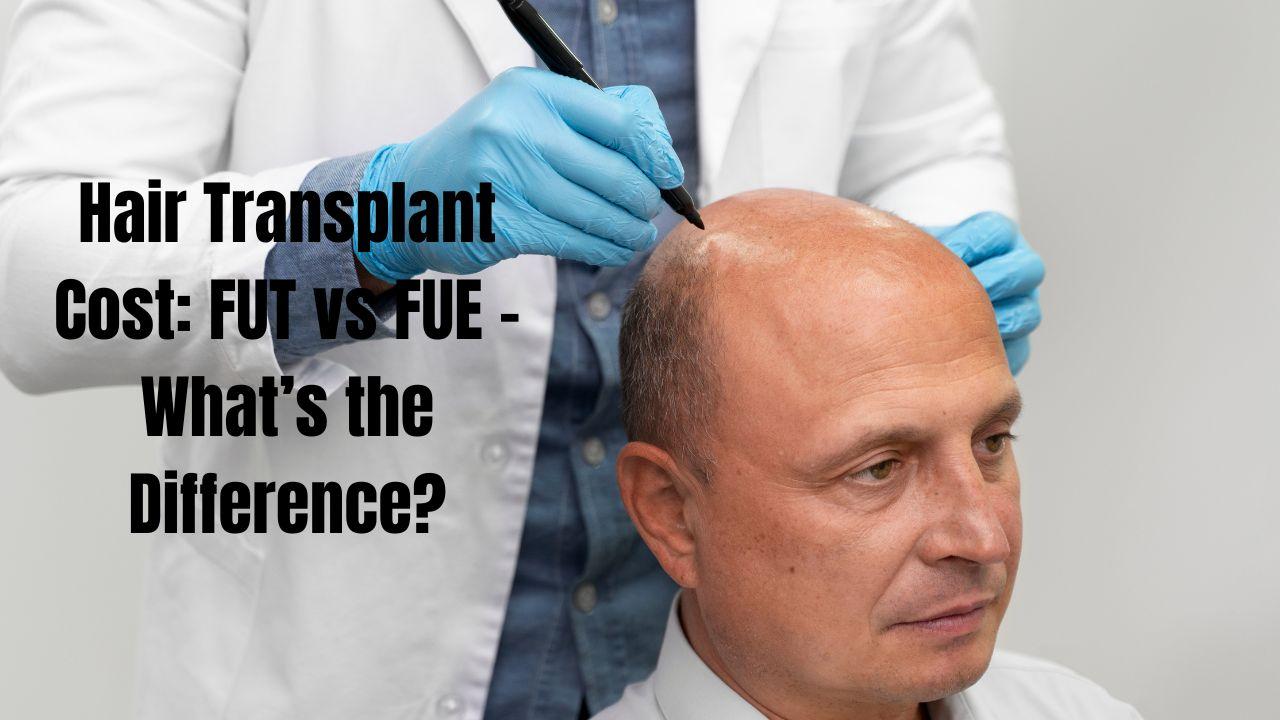Hair Transplant Cost: FUT vs FUE – What’s the Difference?

Hair transplants are a trusted, long-term solution for hair loss, offering natural-looking results by relocating healthy hair follicles to thinning areas. The two main techniques—FUT (Follicular Unit Transplantation) and FUE (Follicular Unit Extraction)—differ in their methods and costs. FUT involves removing a strip of the scalp, which can make it more affordable but comes with a longer recovery time. FUE extracts individual follicles, which is a less invasive procedure that leaves minimal scarring but typically costs more due to its precision and time requirements. Hair transplant cost ultimately varies based on the technique, the surgeon's expertise, and the number of grafts needed for the desired coverage.
What Is a Hair Transplant?
A hair transplant is a surgical procedure that moves healthy hair follicles from one part of the body, usually the back or sides of the scalp, to areas with thinning or no hair. It is intended to boost self-esteem and encourage the growth of natural hair. Male or female pattern baldness sufferers who have enough donor hair are the best candidates. Long-lasting effects, an enhanced look, and a fuller hairline are typical objectives. Although the cost of a hair transplant varies depending on the technique and clinic location, the permanent and transformational results it provides for correcting hair loss frequently make the investment worthwhile.
Overview of FUT and FUE Techniques
FUT (Follicular Unit Transplantation) involves removing a strip of scalp to harvest hair follicles, leaving a linear scar. It allows for more grafts to be performed in a single session, making it cost-effective for larger areas. Recovery takes about 10–14 days.
FUE (Follicular Unit Extraction) extracts individual follicles using a micro-punch tool, resulting in tiny dot scars and faster healing—about 5–7 days. It's less invasive and offers more styling flexibility. However, it may cost more due to its detailed process. Both methods impact overall hair transplant cost, and the choice depends on the patient's hair goals, budget, and preference for scarring and recovery.
Key Factors That Influence Hair Transplant Cost
The cost of a hair transplant varies based on several key factors. The number of grafts needed directly impacts the total price, as more extensive hair loss typically requires a greater number of grafts. A surgeon's experience and credentials can increase costs but often lead to better results. The clinic's geographic location also plays a role—clinics in major cities or upscale areas typically charge more. Reputation and advanced technology used by the clinic can increase the cost but add value. Lastly, aftercare and follow-up services may be included or charged separately, which can affect the overall expense. Understanding these elements helps patients plan for a successful hair restoration journey.
FUT vs FUE: Cost Comparison
When considering a hair transplant, understanding the difference between FUT and FUE methods is essential. The average price for FUT (Follicular Unit Transplantation) typically ranges from $4,000 to $10,000, as it involves removing a strip of scalp and is less time-intensive. On the other hand, FUE (Follicular Unit Extraction) usually costs between $5,000 and $20,000 due to its meticulous, graft-by-graft harvesting process.
FUE is generally more expensive because it requires more advanced technology, greater precision, and a longer time commitment per session. While FUT may offer a lower cost per graft, FUE provides less visible scarring and quicker recovery, offering better long-term value despite the higher upfront pricing.
Real-Life Cost Scenarios
The cost of a hair transplant varies depending on the method and individual needs.
Case Study 1 features a patient who chose FUT, paying around $4,500 for 2,500 grafts. The result was a fuller hairline with minimal downtime.
Case Study 2 involved FUE, where a patient paid $7,000 for 2,000 grafts, favouring less scarring and quicker healing. Costs include consultation, procedure, and aftercare. While FUE is typically more expensive due to its precision, both methods offer natural-looking results. Understanding these price breakdowns enables patients to make informed decisions based on their goals, budget, and specific hair restoration needs.
How to Choose the Right Method for Your Budget
When considering hair transplant costs, it's essential to balance the budget with long-term results. Start by assessing your hair goals, current density, and expectations—this helps determine the most suitable method, whether FUE or FUT. A consultation with a qualified hair transplant surgeon is essential for receiving personalized recommendations. While price matters, choosing the cheapest option can risk poor outcomes. Prioritize a skilled provider with a proven track record. Investing in quality ensures natural-looking, lasting results that are worth every dollar. Your hair restoration journey should focus on value, not just cost—because confidence is priceless.
Conclusion
The procedure and recovery are where FUT and FUE differ most in terms of cost; FUT is typically less expensive, while FUE offers less scarring and faster healing. Value, however, transcends cost. Finding the technique that best suits your hair objectives, scalp health, and lifestyle requires individualized consultations. Prioritizing knowledge, outcomes, and long-term pleasure over price alone is crucial. Making the best process choice should be based on knowledge rather than cost. At Beverly Hills Hair Restoration, we help you choose the best, most durable solution for your particular requirements.

- Art
- Causes
- Crafts
- Dance
- Drinks
- Film
- Fitness
- Food
- Spellen
- Gardening
- Health
- Home
- Literature
- Music
- Networking
- Other
- Party
- Religion
- Shopping
- Sports
- Theater
- Wellness


